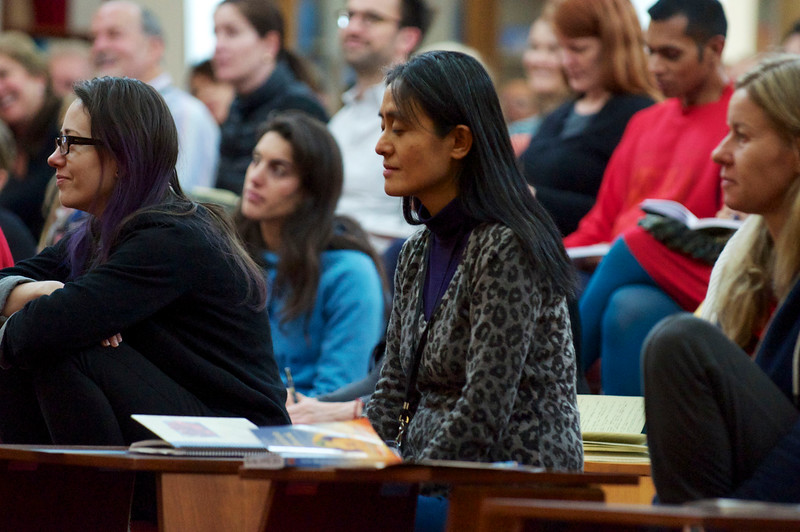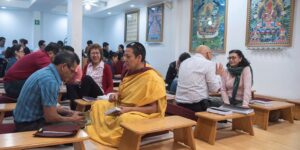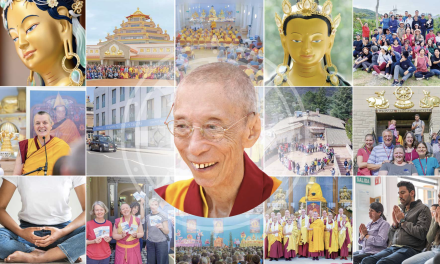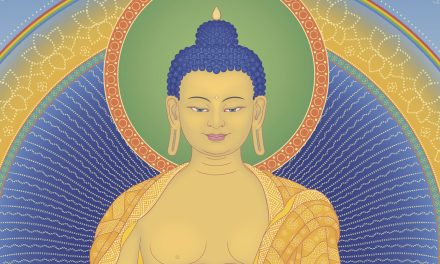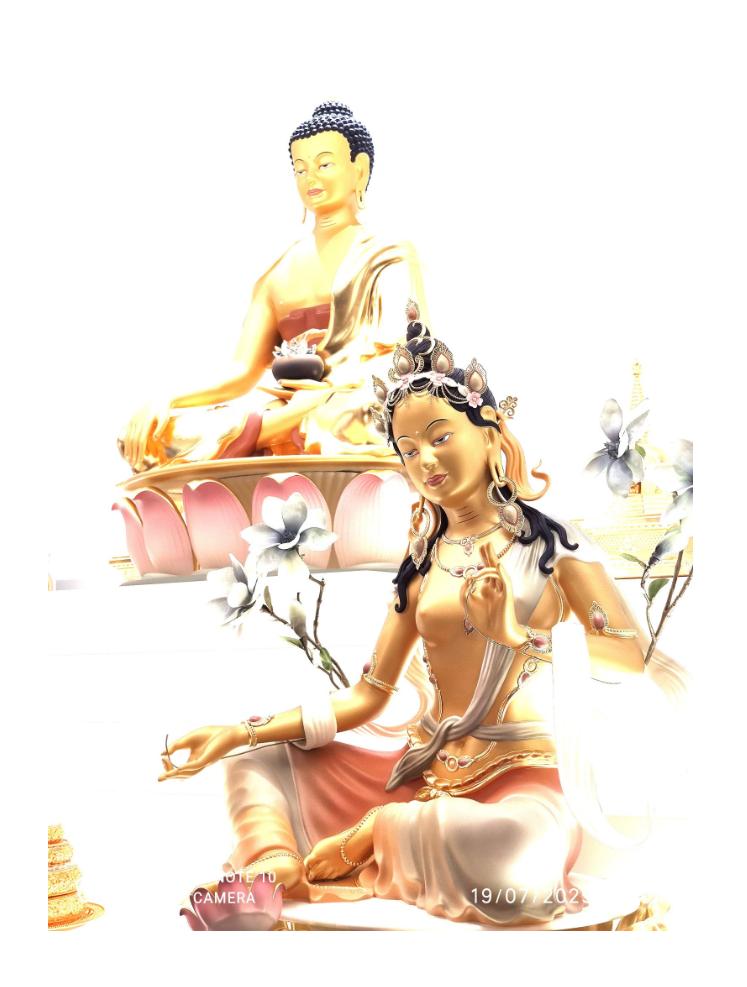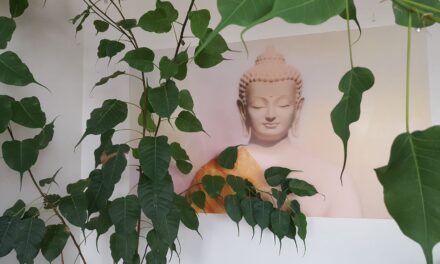The three study programs are at the heart of the New Kadampa Tradition and one of its unique and defining characteristics. Below is a short article tracing their origin and history, and giving a brief overview of the programs themselves.
Early History
In 1976, before Ven Geshe Kelsang left India to teach for the first time in the West, his root Guru, Kyabje Trijang Rinpoche, asked him to do two things, 1. teach Shantideva’s Guide to The Bodhisattva’s Way of Life, the stages of the path to enlightenment (Lamrim), and Chandrakirti’s Guide to the Middle Way; and 2. see if there was any meaning in remaining longer.
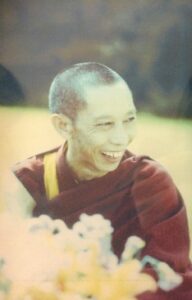 The completion of the first request later became the basis for the highly regarded books Meaningful to Behold and Ocean of Nectar. (Joyful Path of Good Fortune is based not on his first Lamrim teachings according to Essence of Nectar, but on Lamrim teachings he gave later.) The answer to the second request is considered in this article.
The completion of the first request later became the basis for the highly regarded books Meaningful to Behold and Ocean of Nectar. (Joyful Path of Good Fortune is based not on his first Lamrim teachings according to Essence of Nectar, but on Lamrim teachings he gave later.) The answer to the second request is considered in this article.
Upon arrival in the UK, Ven. Geshe Kelsang was initially unsure if the relatively wealthy and comfortably off people living there would have much interest in his teaching. However, he later recounted that he quickly realized Western people were experiencing more mental suffering than people in poor countries, which showed a great need for Dharma. He also identified a problem connected with the way of presenting Dharma:
(Westerners) find it difficult to integrate Dharma into (their) daily lives and cannot use it to solve (their) daily problems … (this is because they) are not studying systematically according to a specially designed program.
The various visiting Buddhist teachers and the Geshe Studies Program available at Manjushri Centre could not fulfil this need for systematic study for westerners. The teachings were mostly in Tibetan and, whilst the Geshe Program was at least systematic, it was only practical for a few people. In 2007, Mandala Magazine described the Geshe studies offered by Tibetan monasteries (upon which the program at Manjushri Centre was based) as accessible to “a rare and courageous breed (of westerners) who penetrates (sic) the womb of Tibetan culture to undertake this intense course of philosophical study and debate.” Commenting on this situation Ven Geshe Kelsang said:
I understand very clearly that the program designed for Tibetan Geshes is not suitable for westerners. For one thing, most western Dharma students are lay people and so they cannot study the Vinaya, which is one of the five subjects studied by Tibetan Geshes. Other subjects studied by Tibetan Geshes are quite technical and, although they are very profound and beneficial, they do not have immediate application. The nature of western people is to study something one day and to want to put it into practice the next. This is a very good quality because they are always trying to gain practical experience of what they study.
In 1978 the students and residents of Manjushri Institute (now Manjushri Kadampa Meditation Centre) signed a petition requesting Ven. Geshe Kelsang to stay. At around the same time, Ven. Geshe Kelsang recounted that he returned to India and met with Trijang Rinpoche, explaining to his teacher that there would only be meaning in his remaining in England if he could change the way of presenting Dharma, to make it suitable and accessible for Westerners. During teachings in Brazil 2010, Ven. Geshe Kelsang recounted the meeting as follows:
I told him about all these difficulties. He had only one answer: ‘You don’t need to worry. My students are Tibetan so I need to teach Dharma according to the Tibetan tradition. Your students are mainly westerners so you should teach Dharma according to their tradition. You don’t need to teach the Tibetan tradition. You cannot change the meaning of Dharma but you should present how to practice and how to follow a spiritual way of life according to what is acceptable to their tradition and society.
Between 1980 and 1986 Ven. Geshe Kelsang began laying the foundation of what was to become the new and systematic Dharma study program for his “Western” students. As well as teaching regularly and learning English, he also prepared 4 new books and oversaw a program of translating teachings and prayers into English.
The Creation of the Kadampa Study Programs
In a talk in 1990, Ven, Geshe Kelsang said:
When I completed .. and was awarded my Geshe degree, I felt as if I had reached the summit of the highest mountain. My faith and experience had increased considerably and I felt great confidence in teaching others. My mind was very happy and I felt completely free from problems. Inspired by my own experience, I developed a strong wish to introduce a similar program for western Dharma students so that they could reap the same results.
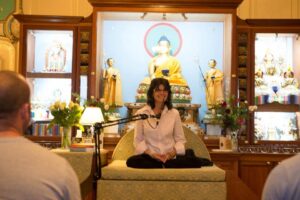 From 1984 to 1987, Ven. Geshe Kelsang experimented with different models of study programs at Madhyamaka Centre, his first Centre. In 1987, he entered a three-year retreat at Tharpaland in Scotland, during which time he designed and started the so-called Foundation Program and Teacher Training Program at Madhyamaka Centre, and not long after at Manjushri Centre – both these programs remain to this day, along with the General Program that had started earlier. Also during his three-year retreat he worked to prepare the essential books that would form the basis of these Study Programs, including Joyful Path of Good Fortune.
From 1984 to 1987, Ven. Geshe Kelsang experimented with different models of study programs at Madhyamaka Centre, his first Centre. In 1987, he entered a three-year retreat at Tharpaland in Scotland, during which time he designed and started the so-called Foundation Program and Teacher Training Program at Madhyamaka Centre, and not long after at Manjushri Centre – both these programs remain to this day, along with the General Program that had started earlier. Also during his three-year retreat he worked to prepare the essential books that would form the basis of these Study Programs, including Joyful Path of Good Fortune.
On completion of his retreat, Ven. Geshe Kelsang gave a talk at Tara Centre in October 1990, during which he said,
I have designed a special Teacher Training Program to enable westerners to complete their study and practice. I have chosen eleven subjects, some of which are philosophical subjects from the Geshe program, and some of which are subjects for practical application, such as Lamrim, Lojong, and Mahamudra. The Foundation Program is based on five of these subjects, all derived from Buddha’s Sutra teachings.
Both the Foundation Program and the Teacher Training Program have now been running successfully for a few years at Manjushri Centre and Madhyamaka Centre. I am very happy with the results. When I read the examination papers it is clear to me that the students have understood the subjects well and that they are deriving great benefit from the programs. I realise that these programs are very meaningful and that they are the best method for increasing wisdom and Dharma experience.
He also described them as “the real wishfulfilling jewels for Dharma practitioners.” Later in 2001 he added:
“Previously my problem, or the problem with Tibetans, was the language. We don’t know your mind, or way of thinking, or way of life. Now you know all these things, and you know Dharma too. You know your culture, your people’s minds, your way of life, and so it is very easy to present and offer this special, precious instruction everywhere. It is not just imagination or belief, but reality.”
Since that time the three study programs – the General Program, Foundation Program, and Teacher Training Program – have become a unique and defining characteristic of the New Kadampa Tradition. They are the basis for all the classes and retreats being offered in the 1300+ Centers and branches around the world.
In the same talk given at Tara Centre in 1990, Ven. Geshe Kelsang explained:
We need qualified Teachers. The New Kadampa Tradition cannot buy qualified Teachers, nor can we invite them from outside. We need Teachers who can teach the twelve texts that we have chosen as our objects of study in the Teacher Training Programme and the Foundation Programme. Other Teachers cannot teach these books because they have not studied them and they do not have the transmissions. Therefore, qualified Teachers within the New Kadampa Tradition can come only from our own students.
The New Presentation
Crucially, with the introduction of these Study Programs across all New Kadampa Tradition Centres, a new lineage – the “Western Tradition” described by Kyabje Trijang Rinpoche in the earlier meeting with Ven. Geshe Kelsang – came into existence. From that point onwards westerners, or more accurately modern people, had access to a new presentation and lineage or “transmission” of the Dharma given according to “their (own) tradition” with no “change to the meaning” or break from the blessings of the “Tibetan tradition” that preceded it.
As Ven. Geshe Kelsang said when introducing the Internal Rules of the New Kadampa Tradition:
Spiritually what is the New Kadampa Tradition? From a spiritual or religious point of view … the New Kadampa Tradition, or NKT, is the hundreds of our Dharma Centres united into one common spiritual path. … Otherwise, who else? There is nothing. I am not the NKT, the Secretary is not the NKT, and the Treasurer is not the NKT.
It is worth highlighting two particular things Ven. Geshe Kelsang accomplished by creating the study programs. Firstly he
made the transmission of Dharma possible in a way that people could “integrate into their daily lives” and use to “solve their problems;” and secondly he did so in a way that allowed the teachings to flourish far and wide by empowering his students and removing the dependency of him or other Tibetan Geshes as the teacher. Also from the Internal Rules talk:
So my job is nearly finished. Then there will be no Tibetans here, so you will be independent; it will be Western Buddhism. We can’t say [it is] “Tibetan Buddhism” as this will be completely Western Buddhism, Kadampa Buddhism.
As a result this new tradition has quickly spread, reaching hundreds of thousands of people across multiple countries and languages. Like a real “wishfulfilling jewel”, these programs range from offering practical methods for solving daily problems like stress or loneliness right through to methods for attaining liberation and enlightenment. Additionally, as Ven. Geshe Kelsang said in 2001:
Although we emphasize the practical way, Lamrim, we are studying very carefully, and not only just believing or imagining. We are really seeking and searching the real nature of phenomena, each object and subject, basis, path, and result. We can prove everything with valid, logical reasons, and not just say ‘Buddha says this’ or ‘Geshe Kelsang says this’.
The mental continuum of every person in the West and the East should be filled with wisdom, understanding reality, ultimate truth. You know what kind of subject we are now studying — try to understand and teach this.
In conclusion, this article considers that the answer to the second request of Ven. Kyabje Trijang Rinpoche: “Is there meaning in (Geshe Kelsang) remaining?” can be understood as the creation, delivery, and global success of the New Kadampa Tradition Study Programs, and the organization and Internal Rules that support them.
A Brief Overview of the Study Programs
The General Program (GP) introduces basic Buddhist view, meditation, and practice suitable for beginners. It also includes advanced teachings and practices of both Sutra and Tantra for practitioners with greater experience.
The Foundation Program (FP) provides a systematic presentation of 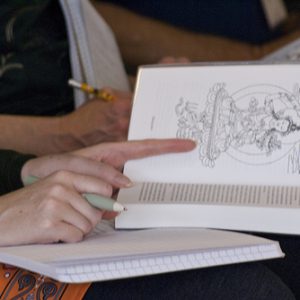 particular subjects of Mahayana Buddhism to enable practitioners to deepen their knowledge and experience of Buddhism.
particular subjects of Mahayana Buddhism to enable practitioners to deepen their knowledge and experience of Buddhism.
The program comprises the following five subjects, based on Buddha’s Sutra teachings and the corresponding commentaries by Venerable Geshe Kelsang Gyatso:
- The Stages of the Path to Enlightenment, based on the commentary Joyful Path of Good Fortune
- Training the Mind, based on the commentaries Universal Compassion and The New Eight Steps to Happiness
- The Heart Sutra, based on the commentary The New Heart of Wisdom
- Guide to the Bodhisattva’s Way of Life, based on the commentary Meaningful to Behold
- Types of Mind, based on the commentary How to Understand the Mind
The Teacher Training Program (TTP) provides a more extensive presentation of particular subjects of Mahayana Buddhism to enable practitioners to deepen their knowledge and experience of Buddhism, and to train as qualified New Kadampa Tradition Teachers.
The Program comprises twelve subjects, based on Buddha’s Sutra and Tantra teachings and the corresponding commentaries by Geshe Kelsang.
Participants also need to observe certain commitments with regard to behavior and way of life, and to complete a number of meditation retreats.
The first five subjects of the Program are the same as for the Foundation Program, and the additional subjects are:
- Guide to the Middle Way, based on the commentary Ocean of Nectar
- Vajrayana Mahamudra, based on the commentary Clear Light of Bliss
- The Bodhisattva’s Moral Discipline, based on the commentary The Bodhisattva Vow
- Offering to the Spiritual Guide, based on the commentaries Great Treasury of Merit and Mahamudra Tantra
- Vajrayogini Tantra, based on the commentary The New Guide to Dakini Land
- Grounds and Paths of Secret Mantra, based on the commentary Tantric Grounds and Paths
- The Practice of Heruka Body Mandala, based on the commentary Essence of Vajrayana
For more information on the Study Programs: Study Programs – Kadampa Buddhism
*******************************************************
More extracts from a talk by Ven Geshe Kelsang called “A Wishfulfilling Dharma Jewel”:
At present in our Centers we have a Foundation Program and a Teacher Training Program. This is not a new tradition. In the past there have been other programs specially designed for Dharma students according to their particular circumstances.
All these programs involved studying a certain number of texts, memorizing material, passing examinations, and being awarded a degree or certificate. For example, the ancient Kadampa Geshes had a program in which they studied six texts. Later Je Tsongkhapa introduced a program based on ten texts, and later still Tibetan Monasteries such as Ganden, Sera, and Drepung introduced a program based on five texts …
Inspired by my own experience, I developed a strong wish to introduce a similar program for western Dharma students so that they could reap the same results. However, I understand very clearly that the program designed for Tibetan Geshes is not suitable for westerners. For one thing, most western Dharma students are lay people …
Our present understanding and experience of Dharma is quite superficial. We are like someone who has entered a huge food store and seen many things but sampled only a few. We may have received many different teachings from many different Teachers, but we have taken in very little, just a few morsels. Therefore our actual experience remains superficial. There is a gap between us and the Dharma. It feels as if Dharma is there and we are here. Our mind is not mixed with Dharma and so we cannot apply it in our daily lives.
As a result our ordinary everyday problems remain. For example, we may have received many teachings on Lamrim and read many books. Intellectually we find it relatively easy to understand and we accept it all, but we find it difficult to integrate into our daily lives, and so we cannot use this Dharma to solve our daily problems. When we study Dharma our mind remains passive, like someone watching television. It does not engage in the subject and mix with it. Therefore our daily life and our Dharma remain completely separate and unrelated.
Why is this? It is because we are not studying systematically according to a specially-designed program. If we just pick at Dharma randomly we will never gain a deep and stable experience, and our wisdom will never become like a full moon …
At present in our Centers we have a Foundation Program and a Teacher Training Program. This is not a new tradition. In the past there have been other programs specially designed for Dharma students according to their particular circumstances …
I very much appreciate the fact that you have all joined the Foundation Program today; you are very kind. With a program like this Dharma Centers become meaningful.
The actual function of a Dharma Center is to give teachings to the people in the area and, by sharing with them our experience of Dharma, to help them to solve their daily problems. If all the people who have enrolled today follow this program patiently, observing all the commitments, passing all the exams, and so on, this will be a great kindness to others.
When you have completed the program you will really be able to help your Center, as well as all the people in your area. In this way you can fulfil your own wishes at the same time as benefiting others. This is no small job; it is a great achievement.

